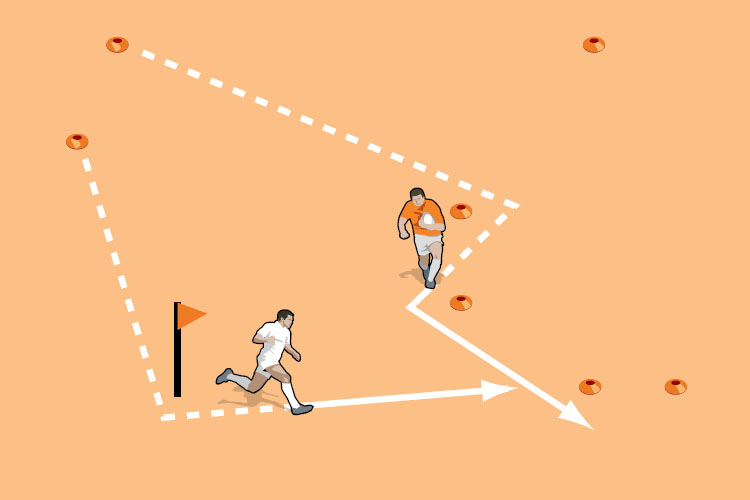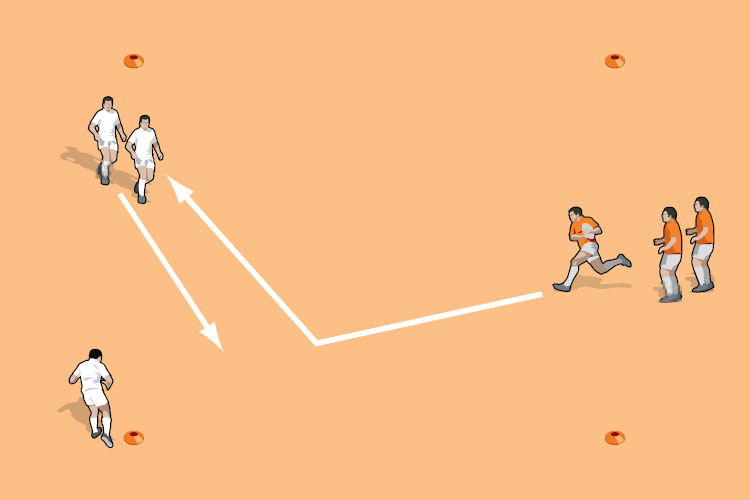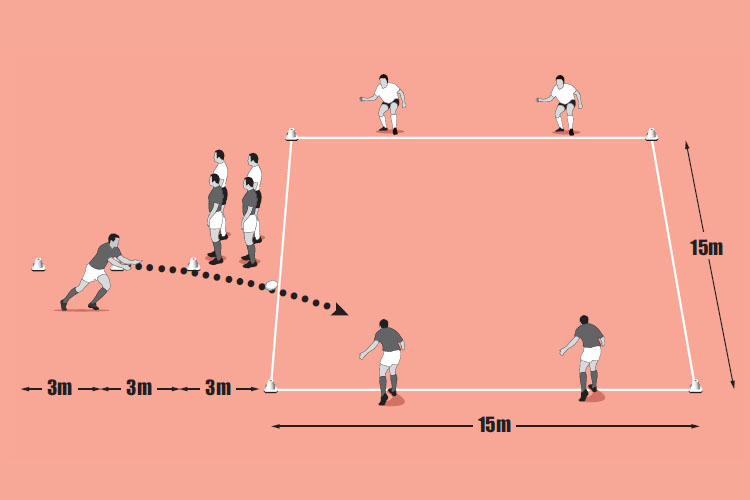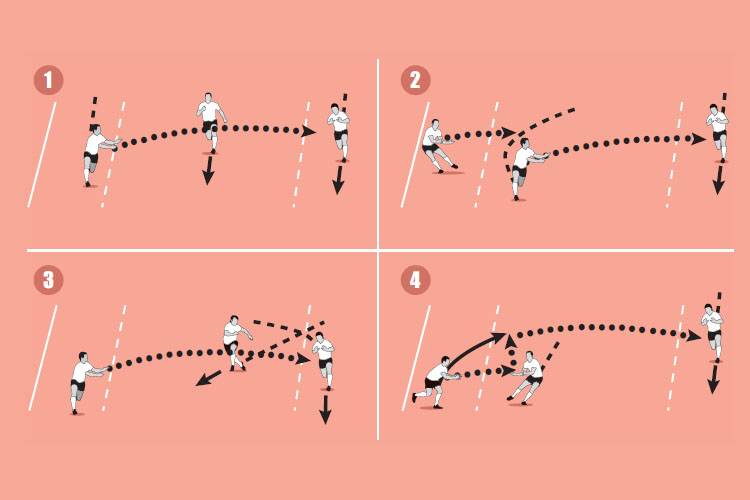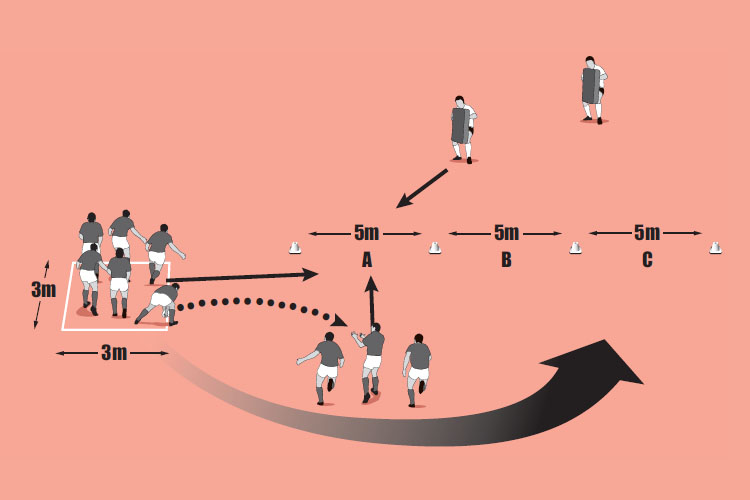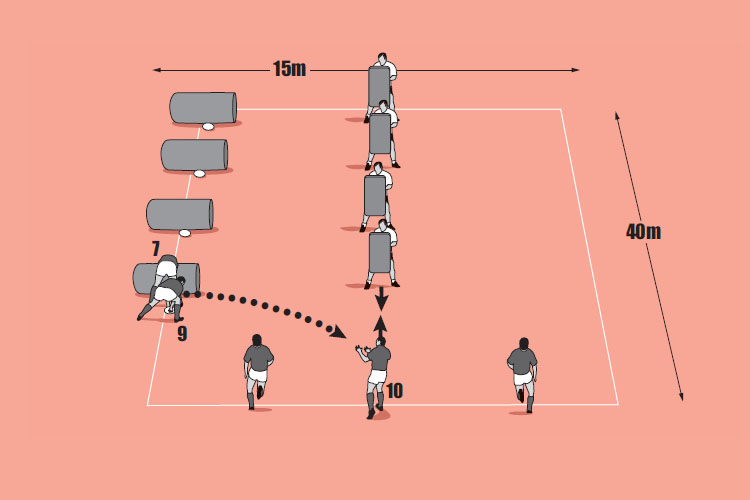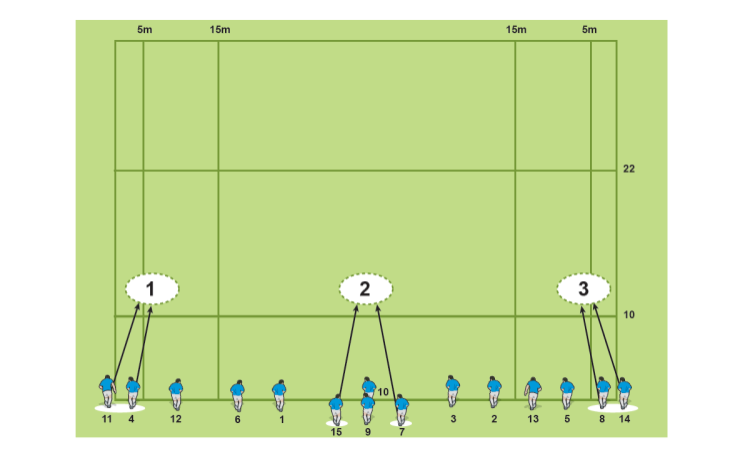You are viewing
1 of your 2 free articles
In the corner
Some players have the natural ability to beat a player one-on-one, but don’t know when to use it or have lost their confidence. Others need the skill to be developed. Even if the player cannot get past his opponent by using this skill, he should at least get beyond the defender and create “go forward” ball.
Warm up time: 5-7
Session time: 10-12
Development time: 5-7
Game time: 10-15
Warm down time: 5-7
What to think about
- How close to the defender should the ball carrier be when he changes pace?There is no set distance. It depends on the relative pace and agility of the two players involved. It is very much a trial and error process for each individual to see how close they can get before accelerating. The closer the attacker gets, the more likely the defender will set himself for a tackle. As soon as the defender stops, the attacker can accelerate away.
- How can I get my players to accelerate well?They need to shorten their stride, lean forward slightly and pump their arms very fast. Use ladders (or cones) to enhance your players’ stride rate, which will improve acceleration and changes of direction.
set-up
- Always be confident in your ability to beat an opponent one-on-one.
- Use changes of pace to fix and then beat an opponent.
- Get the ball in the correct hand so you can fend or protect it.
What you get your players to do
Start a ball carrier on the corner of a square. The defender starts near him (as picture 1). On your call “GO” the ball carrier runs across the middle of the square going in and out of the cones. The defender runs round the edge. The ball carrier has to score in the zone opposite. The defender has to tackle him. Picture 2 describes the technique required to beat the defender.Development
Start the defender in different positions. Move him closer if it is too easy or back if it is too hard. Change which side the defender comes from and move the scoring zone to make the ball carrier think how he will evade the defender.Related Files
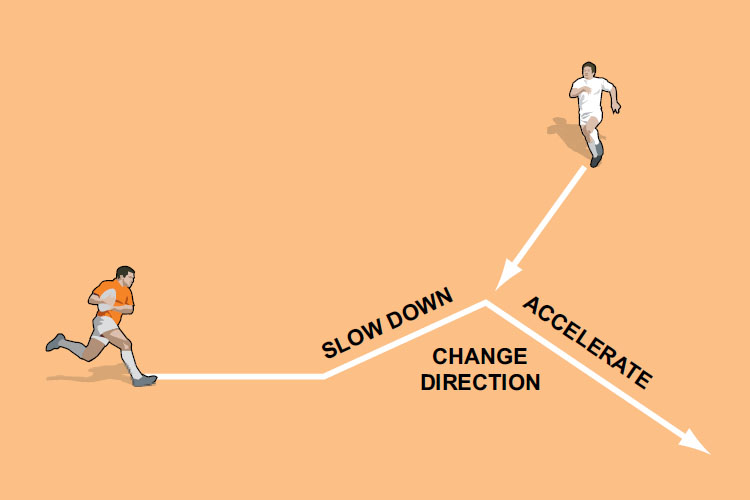
Game situation
One-on-one derby Select two evenly matched teams who face each other across the square. The attacking players attack one at a time against one defender. They get a point for every try scored. The defenders get a point for every try stopped. When every player has attacked the teams swap over. After each round the players swap order so they have a different opponent. Start the defenders from the corners or the middle.What to call out
- “Be ready and react to the “GO””
- “Slow down to pull the defender in then accelerate away to score”
- “Keep the ball away from the defender so you can fend”
Newsletter Sign Up
Coaches Testimonials

Gerald Kearney, Downtown Las Vegas Soccer Club

Paul Butler, Florida, USA

Rick Shields, Springboro, USA

Tony Green, Pierrefonds Titans, Quebec, Canada
Subscribe Today
Be a more effective, more successful rugby coach
In a recent survey 89% of subscribers said Rugby Coach Weekly makes them more confident, 91% said Rugby Coach Weekly makes them a more effective coach and 93% said Rugby Coach Weekly makes them more inspired.
Get Weekly Inspiration
All the latest techniques and approaches
Rugby Coach Weekly offers proven and easy to use rugby drills, coaching sessions, practice plans, small-sided games, warm-ups, training tips and advice.
We've been at the cutting edge of rugby coaching since we launched in 2005, creating resources for the grassroots youth coach, following best practice from around the world and insights from the professional game.
